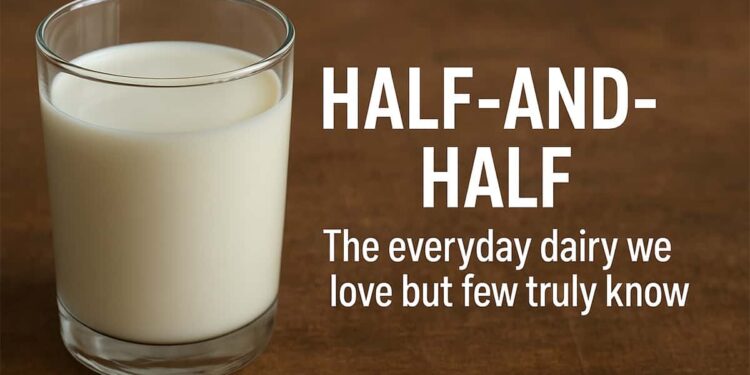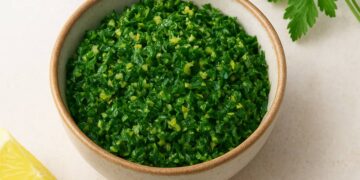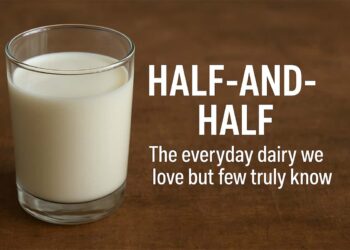Are you a Chinese food lover? When you’re really hungry, you sometimes think of the Chinese dishes “Chow Mein” and “Lo Mein,” and suddenly you’re at a loss for the difference between the two, and which one is best for filling your stomach. Since both have the word “Mein” in their names, there are bound to be similarities and differences.
Don’t worry, many others are also curious about these two dishes. If you’re curious and want to know the difference between Chow Mein and Lo Mein, I’ll explain them here. I’ll explain them in a relaxed manner so you know which one to order to fill your empty stomach.
What Do “Chow Mein VS Lo Mein” Even Mean?
Perhaps we can start this explanation by understanding the terms “mein,” “lo,” and “chow” in both dishes. In Cantonese, “mein” means noodles. The difference lies in the first two words: “lo” and “chow.” But many people often get confused by this.

If we combine the two, “chow mein” means fried noodles. “Chow” means “fried.” Meanwhile, “Lo Mein” means stir-fried noodles, because “lo” means “tossed or stir-fried.” Got it!
When you’re confused about “Chow Mein vs. Lo Mein,” it’s really just about how the noodles are prepared, whether stir-fried or stir-fried. So, the difference lies in the preparation process.
Chow Mein: Crunchy Corner or Soft Stir-Fry?
Chow Mein is fried noodles, and there are two ways to fry them: Sometimes they’re fried in hot oil to create a crispy texture, or they’re stir-fried with various vegetables or pancakes on top, resulting in soft, protein- and fiber-rich noodles. [thespruceeats]
Chow Mein uses only a small amount of sauce, just to coat the noodles. The texture is crispy and chewy; you can imagine chewy, crunchy noodles that you can’t stop chewing.
These two noodle styles are often found in American-Chinese restaurants.
- Crispy chow mein: These noodles are very crispy, often flat pancake-style.
- Steamed/soft chow mein: These are soft, stir-fried noodles with a lighter sauce. [wikipedia]
Lo mein: Toss Me Tender
Lo mein is made by boiling the noodles first, then topping them with sauce, vegetables, and protein at the end.
The sauce is rich and plentiful, blending into the dish. Lo mein is usually rich in sauce or juicy, not dry. The texture is chewy, soft, and smooth. The sauce blends well with the sauce, making the lo mein seem very sticky.
Chow Mein VS Lo Mein: Quick Differences in a Table
| Feature | Chow Mein | Lo Mein |
|---|---|---|
| Name Meaning | “Fried noodles” | “Tossed noodles” |
| Noodle Prep | Par-boiled or fried | Fully boiled before tossing |
| Sauce | Light or minimal | Rich and generous |
| Texture | Crisp and chewy | Soft, smooth, saucy |
| Typical Style | Stir-fried or pancake-style | Stir-tossed with sauce |
Please look at the infographics below for more clearer understanding

Why is it Important to know Chow Mein vs. Lo Mein?
There are several reasons you should understand these two types of noodles. Many people often misunderstand them, many people order them incorrectly, and many people don’t eat because what they received wasn’t what they expected. Even though the delivery was correct, the order was wrong due to the customer’s misunderstanding of the two. So, if you’re considering both, you need to know exactly how they differ to avoid any unwanted consequences.
- Texture Preference: If you want a little crunch, then Chow Mein is your choice. But if you want a little juiciness, rich sauce, and indulgence, then Lo Mein is your buddy.
- Noodle Role: Chow mein makes noodles the star; lo mein blends them into a saucy harmony.
- Customizing Your Meal: Love veggies or extra sauce? Lo mein can soak it all up. Prefer lighter, focused flavor on noodles? Chow mein delivers that vibe.
What Real People Say
On a Reddit cooking forum, I found a Chinese food enthusiast explaining and giving a brief review. He said this:
“Lo mein means ‘mixed noodles’… while chow mein means ‘fried noodles’.”
Others chimed in, confirming:
“Lo mein means tossed noodles. Chow mein means fried noodles.”
That’s the middle-class view of Lo and Chow. With this simple explanation, I hope you understand and won’t make any mistakes when ordering your favorite dishes.
Also check out:
FAQs About Chow Mein VS Lo Mein
1. What are the main differences?
The fundamental difference between the two is in the preparation or cooking process. Chow Mein is stir-fried noodles (often crispy), while Lo Mein is boiled noodles that are then tossed and mixed with sauce.
2. Do Chow Mein and Lo Mein use the same noodles?
Yes, both are made from the same noodles (Chinese egg noodles) which are produced from wheat and eggs. So what differentiates them is not the type of noodle used, but the way they are cooked (prepared).
3. Which one is healthier?
Let’s see, Chow Mein is rich in fat due to being fried, while Lo Mein has more sauce, which means it is richer in sodium. If you add low-fat protein and vegetables, both can be made healthier.
4. Is Chow Mein always crispy?
No, some restaurants serve chow mein in a crispy style, while others serve it soft and stir-fried. In American-Chinese restaurants, the version that is often found includes added pancakes.
5. Can I make Lo Mein with spaghetti instead of egg noodles?
Sure, while it’s not 100% traditional, you can use linguine or spaghetti as a substitute for Chinese egg noodles.
6. Which tastes better: Chow Mein or Lo Mein?
When it comes to taste, it also depends on the individual. If you prefer a light sauce and a bit of crispiness, then chow mein is right for you. If you like something soft and soupy, then Lo Mein is your choice.
7. Are both authentic Chinese dishes?
Yes, both originate from China, but the versions mostly found in Western restaurants today are those that have undergone many modifications and adaptations. Authentic Chinese styles may look and taste different from American-Chinese.













